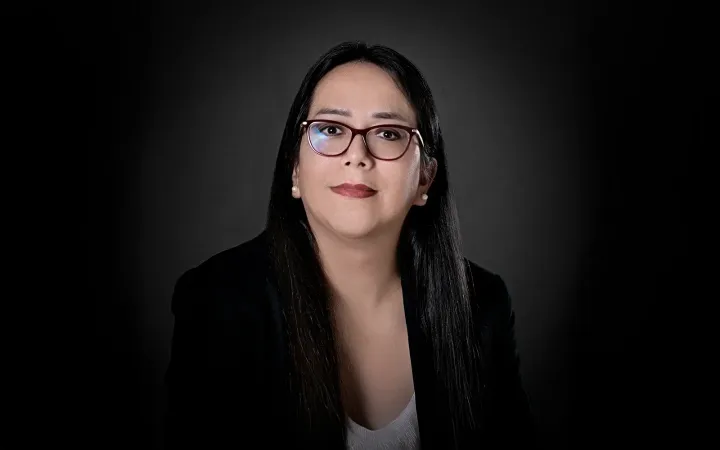Por Sofía Guadarrama Collado
Una mujer de la tercera edad, cubierta por un vestido rosa y largo sin mangas, una bufanda negra y tenis se baja de un automóvil gris, acompañada de dos de sus hijos. Mira al horizonte al mismo tiempo que acaricia un revolver. Con la mano derecha envuelve la empuñadura, introduce el dedo índice en el guardamonte y toca el gatillo, al mismo tiempo que su mano izquierda sostiene el cañón.
Su hijo y su hija también observan hacia la calle. De pronto se escucha un disparo. Él introduce la mano derecha en su chamarra de piel de borrego, saca una pistola y se pone a la defensiva, mientras da pasos hacia atrás. En cambio, la mujer de la tercera edad se abre pasó. Empuña el arma con ambas manos. Se acerca a un hombre vestido de camiseta gris y cachucha, quien sostiene un teléfono celular. Cruzan unas cuantas palabras y ella dispara.
La mujer que graba desde el segundo piso grita: «¡Le pegó a mi suegro!». El hombre cae de rodillas. Otra mujer de playera negra sale en su auxilio. Luego acude otro hombre de edad joven, vestido con una playera blanca y bermudas rojas. Se coloca detrás del hombre herido, pero ni eso le salva la vida. Una bala lo derriba al instante. El hombre de la camiseta gris al ver que su pariente cayó abatido, saca fuerzas desde el fondo de su ser, se pone de pie, a pesar de estar herido, y se lanza contra la mujer del vestido rosa, al mismo tiempo que otro intenta arrebatarle el arma. El hombre de la camiseta gris golpea con furia a la anciana. En ese momento, el hijo y la hija de la mujer del vestido rosa, acuden en defensa de su madre. La mujer de playera negra también se mete en el pleito, mientras la mujer que graba el video grita aterrada y pide auxilio. Pero no deja de grabar. Lo cual me genera una duda: ¿Es para tener evidencia ante las autoridades o por ese insaciable vicio moderno de grabar videos y subirlos a las redes sociales?
Todo esto ocurrió en Chalco, Estado de México. La mujer del vestido rosa fue identificada como Carlota. De acuerdo con su testimonio, las personas a las que mató, invadieron su casa y fue a sacarlos a punta de pistola.
Segundo caso, una adolescente de 14 años confía en su tío político, esposo de la hermana de su padre, juega videojuegos con él, le otorga toda su confianza y una noche se queda a dormir en la casa de sus tíos. Ella duerme en la recámara que será de su prima que está por nacer. De pronto, ella despierta asustada al sentir un cuerpo pesado sobre el suyo. El hombre le tapa la boca, le dice que no grite, que le va hacer cosquillas y la viola. Al finalizar, le dice que su tía no le creerá nada si le cuenta y la amenaza con hacerle daño a la prima que está por nacer. El atraco se repite una o dos veces por mes durante tres años. Hasta que un día, el abuelo se da cuenta de lo ocurrido, habla con su hijo y éste, secuestra a su cuñado y lo mata.
Tercer caso, una niña de ocho años pide permiso para ir a jugar a casa de una amiga, pero no regresa. Esa misma tarde, es reportada como desaparecida. Al día siguiente, su cuerpo sin vida es hallado en la carretera Taxco-Cuernavaca. Una vecina de la familia, resulta sospechosa. Las autoridades acuden al domicilio, arrestan a los presuntos culpables y los trasladan en una camioneta, pero la multitud enardecida agrede a los detenidos, los bajan de la camioneta y los linchan. La mujer muere a causa de los golpes y los otros dos quedan gravemente heridos.
Cuarto caso, agricultores y habitantes, cansados de las constantes extorsiones y amenazas por parte de La Familia Michoacana, deciden enfrentar a sus agresores con machetes, palos y herramientas de trabajo. Once presuntos integrantes de La Familia Michoacana y tres habitantes locales fallecen.
No se puede describir con unas cuantas palabras el barrizal de dolor, rabia e impotencia que estas personas han vivido. Juzgarlos a la ligera es tan injusto como el suplicio que tuvieron que resistir. Nuestra empatía les resulta inútil cuando la justicia es inalcanzable. Pues muchas veces los procedimientos legales establecidos parecen estar hechos para no solucionar nada. E ahí donde radica el génesis del problema. Es por ello que muchas personas deciden tomar la justicia con sus propias manos sin recurrir a las autoridades.
¿Cómo podemos enjuiciar a quien decide castigar, vengarse o corregir una situación que considera injusta, cuando la justicia en México está muy lejos de ser justa? ¿Cómo podemos criticarlos cuando sólo entre el 0.3% y el 5% de los delitos en México son castigados?
En 2023, se reportaron 6,718 carpetas de investigación por despojo de inmuebles («paracaidistas») a nivel nacional. Según Encuesta Nacional de Victimización y Percepción sobre Seguridad Pública ENVIPE la cifra negra de delitos no denunciados supera el 90%).
En 2023, el Sistema Nacional de Seguridad Pública reportó más de 1.9 millones de delitos registrados. Sin embargo eso no es lo peor; el 93.3% de los delitos no se denuncian o no resultan en una investigación formal.
De acuerdo con el Secretariado Ejecutivo del Sistema Nacional de Seguridad Pública (SESNSP), en 2023 se denunciaron 21,718 casos de abuso sexual. Sin embargo, esta cifra sólo refleja los casos registrados oficialmente. El número real de abusos sexuales en México (la cifra negra), podría ser de 200,000 cada año.
Es importante señalar que, según la Encuesta Nacional de Victimización y Percepción sobre Seguridad Pública (ENVIPE) del INEGI, más del 90% de los delitos sexuales no se denuncian. De acuerdo con Mexicanos Contra la Corrupción y la Impunidad (MCCI), entre 2012 y 2022, se denunciaron cerca de 330,000 delitos sexuales, pero solo el 8.6% fueron resueltos. Es decir que el 91% de los violadores siguen en las calles y gozan de impunidad.
Suscríbete para leer la columna completa…




